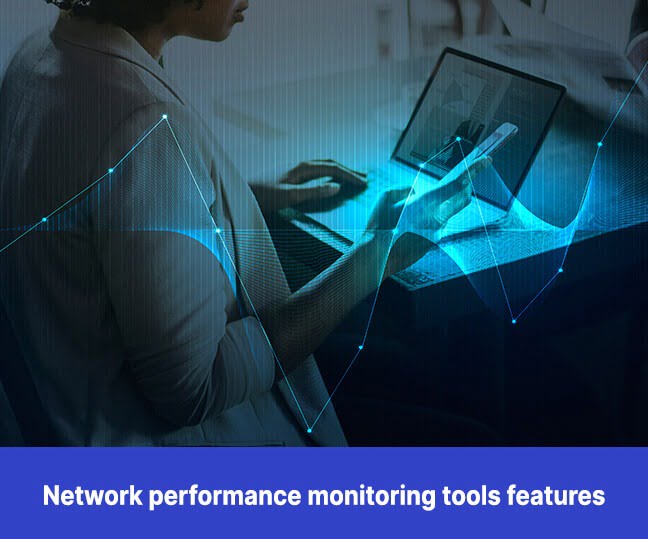The modern IT landscape is filled with rapid technological advancements, evolving work models, and growing user expectations. To improve team productivity, IT leaders must adapt to these shifting dynamics.
The transition from on-premises data centers to cloud infrastructure has been especially like a cat among the pigeons. With the explosion of SaaS applications, today’s IT professional navigates an environment dramatically different from a decade ago. No longer just the team behind the scenes, the IT department is now thrust into the spotlight, driving strategic business decisions.
The situation is complex, given that the average IT team member or manager is far more well-versed in the digital transformation culture than ever before. Furthermore, the mindset is changing. For instance, a market survey reported that “more than 70% of employees worry about stressors like their jobs and finances during work hours.”
Related article: Everything You Should Know About Collaborative Work Management In 2023
What Helps IT Teams Truly Improve Team Productivity in 2025?

Unlike many other organizational departments, IT is unpredictable and relentless. The very nature of IT management involves juggling emergency patches, security breaches, and system upgrades, to name a few. But what sets IT apart is the sheer pace of change. So, is it any surprise that “each year, productivity loss due to fatigue costs $1,967 per employee?“
The speed of technological innovation is astonishing, with new tools, platforms, and languages emerging almost daily. This rapid evolution isn’t just about adopting the latest tech but understanding its implications on the broader business. As a result, IT teams are under constant pressure to adopt, adapt, and innovate.
Impact of high IT team productivity across the organization
- Business agility: High IT productivity ensures businesses can pivot quickly, adapting to market changes and seizing new opportunities faster than competitors. For instance, a retail company that can quickly adjust its IT infrastructure can launch an online sale in response to a sudden market trend, capturing a larger audience while competitors are still strategizing.
- Customer satisfaction: Efficient IT operations mean smoother system functionalities, improved user experiences, and higher customer satisfaction. For instance, a SaaS platform that regularly optimizes its website for speed and responsiveness. Customers of this platform are likely to enjoy seamless experiences, leading to positive brand journeys.
- Cost reduction: An optimized IT team can preemptively address issues, reducing downtimes and the associated financial ramifications. Consider a financial institution that uses predictive analysis to identify potential system glitches. Addressing these glitches before they escalate can help avoid costly downtimes that disrupt customer transactions.
- Powerful security: A productive IT team can more proactively identify and mitigate potential security threats, safeguarding company data and reputation. For example, a health service provider with a vigilant IT team might detect and rectify vulnerabilities in a patient data system, preventing a data breach that could have had significant legal and PR consequences.
- Competitive edge: With IT processes, businesses can launch new features or products ahead of the curve, setting industry standards and staying ahead of competitors. Let’s take the case of a streaming service that quickly integrates cutting-edge AI recommendations. This allows users to receive better content suggestions, making the platform more appealing than competitors who might still be using older algorithms.
Navigating Challenges in Enhancing IT Team Productivity
Maximizing the productivity of IT teams is crucial for the smooth operation of modern organizations. However, achieving high productivity levels within IT departments is challenging. Here, let’s discuss the primary challenges organizations encounter when endeavoring to optimize the productivity of their IT teams.
Related blog: Transforming Customer Service: Harnessing the Potential of Natural Language Processing
1. Skill Gaps
- Challenge: Rapid technological advancements can lead to skill gaps within IT teams, as keeping up with trends and technologies can be challenging.
- Impact: Skill gaps can result in delays in adopting new technologies, difficulties in maintaining and troubleshooting systems, and decreased adaptability to changing business needs.
2. Legacy Systems:
- Challenge: Older legacy systems can be complex to maintain and integrate with modern solutions due to outdated architecture and limited flexibility.
- Impact: Legacy systems can slow operational processes, inhibit scalability, increase operational costs, and limit innovation.
3. Communication and Collaboration:
- Challenge: Inadequate communication and collaboration among IT teams or between IT and other departments can lead to misunderstandings, duplication of efforts, and inefficiencies.
- Impact: Poor collaboration can result in missed opportunities, misalignment of goals, conflicts, and suboptimal project outcomes.
4. Workload Management:
- Challenge: IT teams often deal with heavy workloads, which can result in stress and burnout.
- Impact: Overworked IT professionals may make errors, miss project deadlines, and struggle to maintain a healthy work-life balance.
5. Security Concerns:

- Challenge: The constantly evolving cybersecurity landscape requires dedicated resources and vigilance.
- Impact: Insufficient security measures can lead to data breaches, system downtime, financial losses, and damage to an organization’s reputation.
6. Resource Constraints:
- Challenge: Limited budgets and resources can restrict IT teams from making necessary investments in tools and infrastructure.
- Impact: Resource limitations can hinder innovation, delay critical projects, and restrict the organization’s ability to respond to changing business demands.
6. Change Management:
- Challenge: Resistance to change within IT teams can hinder the adoption of new technologies, processes, or methodologies.
- Impact: Resistance can lead to project delays, reduced morale among team members, and missed process improvement and innovation opportunities.
7. Measuring productivity:
- Challenge: The absence of clear metrics and KPIs for IT team productivity.
- Impact: Without meaningful metrics, organizations struggle to assess progress, identify improvement areas, and make data-driven decisions.
Four Practical Tips to Optimize IT Team Productivity
1) Automation of routine tasks

Undeniably, automation is a necessity in this day and age. That’s why, according to a study, “89% of workers think gamification may boost productivity at the workplace.” Automating routine tasks like software updates, backup processes, and ticketing systems frees up your IT team’s time, allowing them to focus on more value-added activities.
For instance, consider an IT team that manually handles server backups. This manual process, prone to human errors, could be automated, ensuring that backups are taken at regular intervals without fail. This ensures data safety and liberates team members to tackle more strategic challenges.
2) Integration of AI in troubleshooting
Artificial Intelligence (AI) can be a game-changer in IT troubleshooting. With AI-driven insights, IT teams can predict potential system breakdowns before they happen, diagnose issues faster, and even automate solutions for recurring problems. For example, an AI system detects unusual patterns, which might be indicative of cyberattacks, and instantly alerts the team or even takes pre-emptive measures. Such proactive measures drastically reduce downtime and potential data breaches.
3) Role of continuous training
With the rapid pace of technological evolution, continuous training is non-negotiable. Investing in regular training sessions ensures that your IT team is always equipped with the latest knowledge and skills, reducing the learning curve when implementing new technologies. For example, new cloud infrastructure could significantly reduce migration time and errors if the IT team has already been trained on that specific platform. It ensures smooth transitions and quicker adoption of new tools.
4) Benchmarking performance metrics
What gets measured gets improved. Establishing benchmarks for performance metrics provides a clear picture of where the team stands and where improvements are needed. Regularly assessing these metrics ensures the team stays on track and optimizes processes. For example, the average response time to internal service tickets can be calculated. If the team notices an uptrend in response times, they can identify bottlenecks and streamline their processes, ensuring internal stakeholders receive quicker resolutions.
Related blog: Keeping IT on track: Why AI-powered incident management in ITOps is an urgent need
Wrapping up
Looking at the tech horizon, the future for IT teams appears even more promising. Of course, the challenges might be monumental, with newer technologies like quantum computing, IoT, and the integration of AI in almost every facet of business. But, with these challenges come opportunities. As working models become more unpredictable and user expectations get even more complex, it is crucial to keep the wheels of innovation turning.
After all, in the world of IT, standing still is similar to moving backward.


















